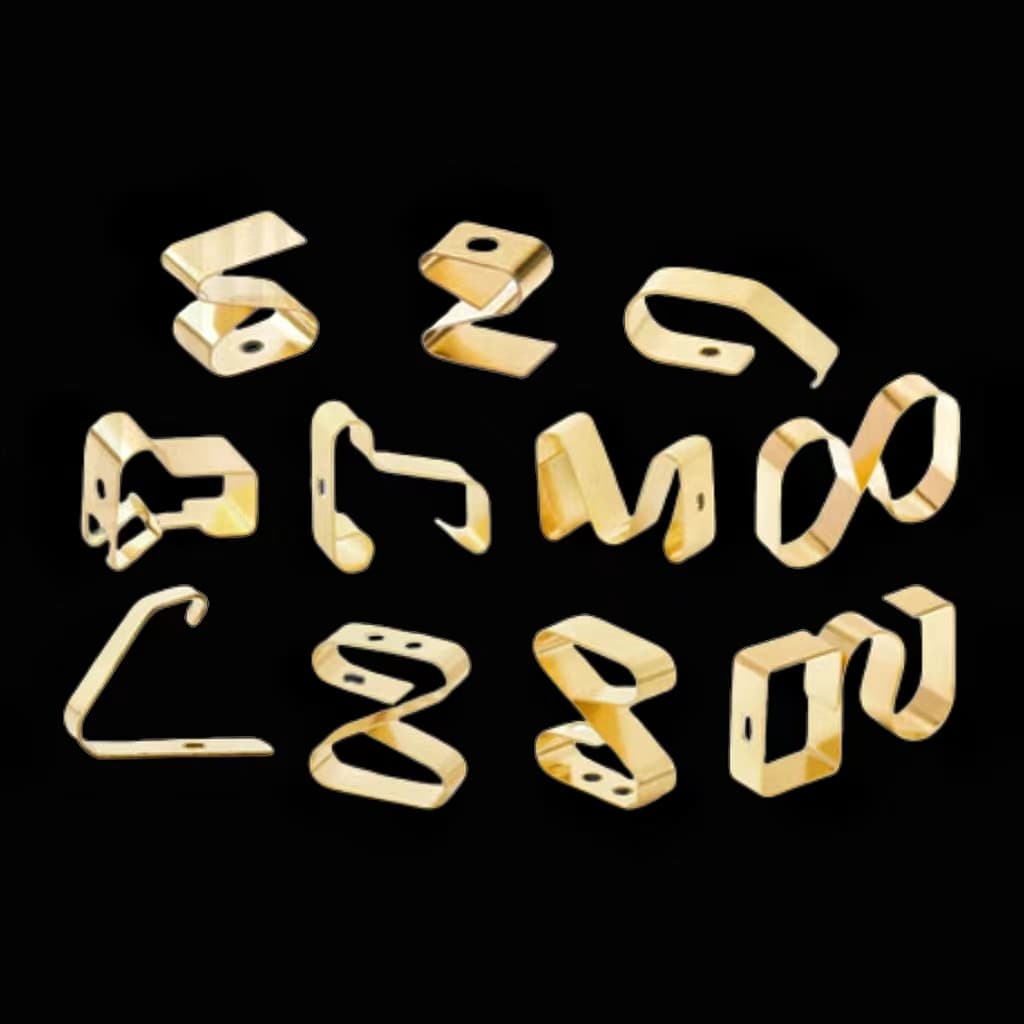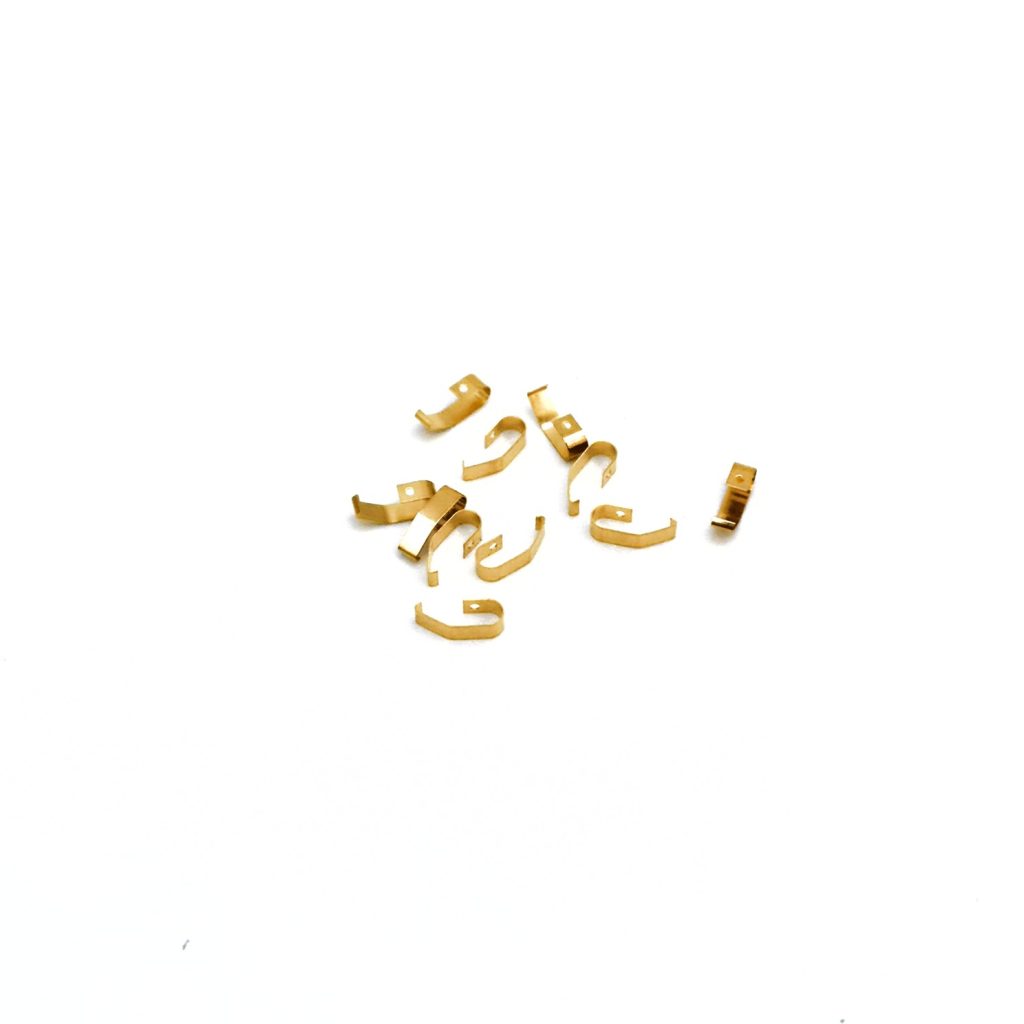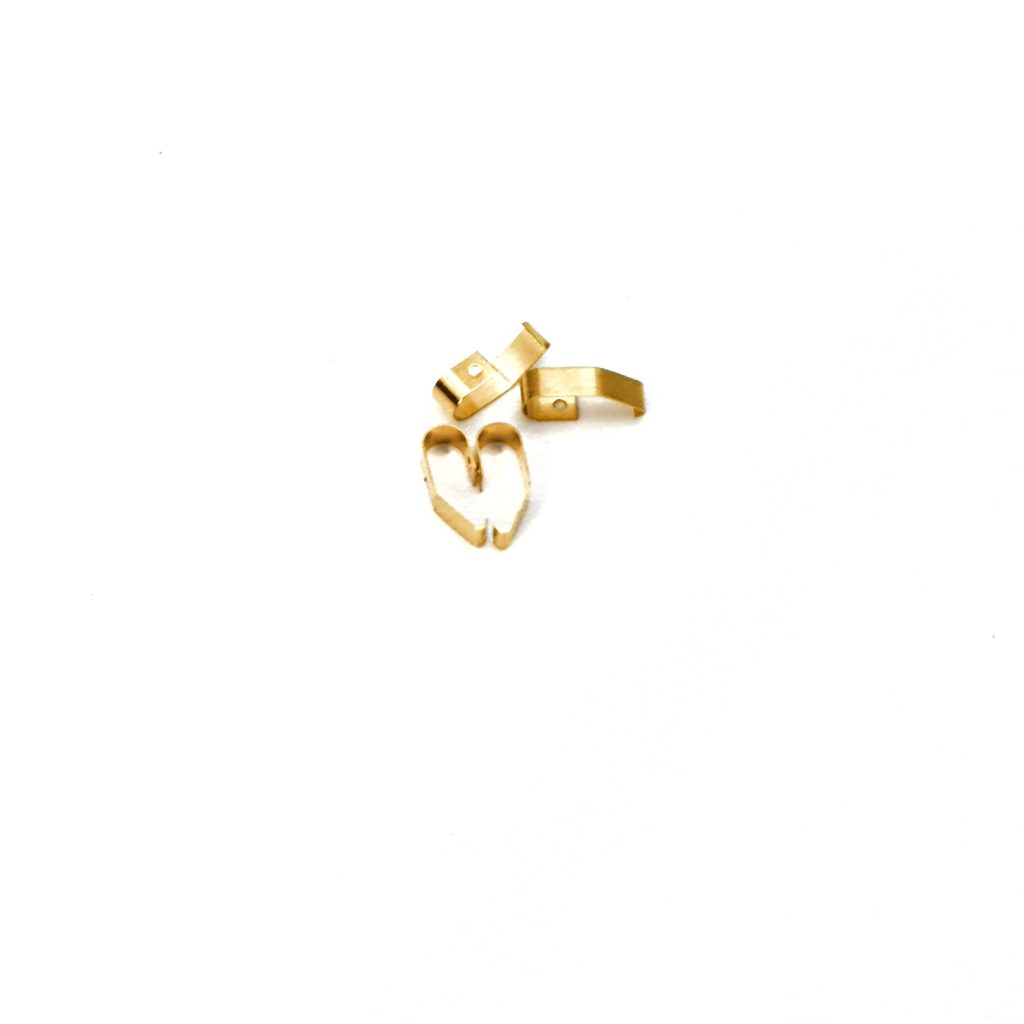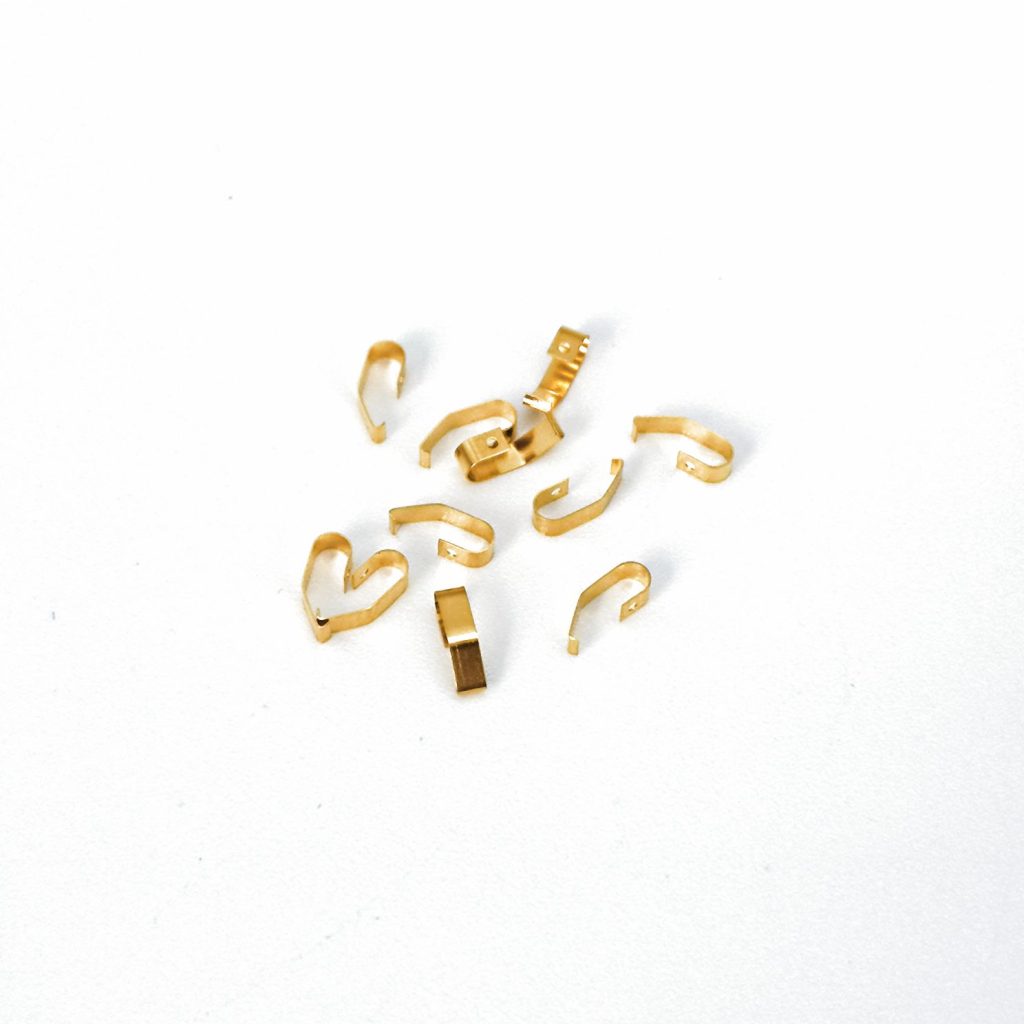SMD 스프링 핑거 접점 용접 공정 및 성능 최적화의 핵심 사항
중국 후난성 천저우시

SMD 스프링 핑거 접점
목차
전자 기술의 급속한 발전으로 다양한 전자 장치에 SMD(표면 실장 장치) 부품이 점점 더 많이 사용되고 있습니다. 중요한 연결 구성 요소로서 SMD 스프링 핑거 접점 전체 회로의 안정성과 신뢰성에 직접적인 영향을 미칩니다. 용접 공정은 SMD 스프링 핑거 접점의 성능에 중요한 역할을 합니다. 이 기사에서는 용접 공정이 SMD 스프링 핑거 접점의 성능에 미치는 영향을 자세히 살펴보고 제품 품질과 신뢰성을 개선하는 데 도움이 되는 최적화 전략을 제공합니다.
소개
SMD 스프링 핑거 접점 는 컴팩트한 디자인, 높은 신뢰성, 뛰어난 전기적 성능으로 다음 산업 분야에서 널리 사용됩니다:
- 전자 및 통신 장비
- 모바일 장치: 스마트폰, 웨어러블(예: 스마트워치)의 PCB 인터커넥트 및 배터리 접점.
- RF 모듈: 낮은 접촉 저항과 간섭 방지 특성을 활용하여 5G 통신 기지국 및 마이크로파 모듈에서 고주파 신호를 전송합니다.
- 자동차 전자 제품
- 새로운 에너지 및 스마트 차량: 진동과 온도 변동을 견딜 수 있도록 설계된 배터리 관리 시스템(BMS), 온보드 센서 및 전자 제어 장치(ECU)의 안정적인 연결.
- 자동차 ECU: 엔진 제어 및 ADAS 시스템용 신호 전송.
- 산업 자동화 및 전력 장비
- 고전압 스위치 기어: 가스 절연 개폐기(GIS)의 소형 제어 회로에 사용되는 반면, 기존의 스프링 핑거 접점(예: 베릴륨 구리 유형)은 중/고압 도체 연결에 더 일반적으로 사용됩니다.
- 산업용 센서 및 컨트롤러: 열악한 환경의 애플리케이션(예: 온도/압력 센서)을 위한 신호 인터페이스.
- 의료 기기
- 휴대용 의료 기기: 심전도 모니터, 혈당 측정기 및 장기적인 안정성과 생체 적합성이 요구되는 기타 정밀 기기의 저전력 연결.
- 항공우주 및 방위
- 항공 전자 공학: 극한의 온도와 진동에 강한 온보드 통신 및 내비게이션 시스템용 고밀도 인터커넥트.
- 위성 및 레이더 시스템: 경량 설계 및 고주파 성능 요구 사항.
- 재생 에너지 및 에너지 저장 시스템
- 태양광 인버터 및 에너지 스토리지: 자동화된 SMT 제조와 호환되는 소형 배터리 팩 인터커넥트 및 전력 모듈.
1. 용접 공정이 성능에 미치는 영향
1.1 전기적 성능
- 접촉 저항: 냉납 접합, 납땜 부족 또는 과다와 같은 용접 품질이 좋지 않으면 SMD 스프링 핑거 접점과 회로 기판 간의 전기 연결이 불안정해져 접촉 저항이 증가할 수 있습니다. 접촉 저항이 증가하면 신호 전송 중에 에너지 손실이 발생하여 신호 감쇠가 발생하고 특히 고주파 및 고속 신호 전송 애플리케이션에서 전체 회로의 성능에 영향을 미칠 수 있습니다.
- 전도성: 용접 중 부적절한 온도 제어는 접점의 금속 재료에 산화 또는 기타 화학 반응을 일으켜 전도 특성을 변경할 수 있습니다. 예를 들어 용접 온도가 지나치게 높으면 스프링 핑거의 금도금 층이 손상되어 우수한 전도성이 저하되어 전체 회로의 전도 성능과 신호 전송 품질에 영향을 미칠 수 있습니다.
1.2 기계적 성능
- 연결 강도: 용접 공정은 SMD 스프링 핑거 접점과 PCB 사이의 연결 강도를 직접 결정합니다. 용접 온도가 너무 낮거나 시간이 너무 짧으면 솔더가 완전히 녹지 않고 솔더 조인트 표면을 적셔 연결이 약해집니다. 이후 사용 시 스프링 핑거가 외부 힘으로 인해 느슨해지거나 분리되기 쉽습니다. 반대로 용접 온도가 너무 높거나 시간이 너무 길면 솔더 패드 또는 스프링 핑거의 금속 재료가 과열되어 재료 성능이 저하되거나 솔더 조인트의 취성이 발생하여 연결 강도가 저하되고 제품 신뢰성에 영향을 미칠 수 있습니다.
- 탄력성 성능: 부적절한 용접 공정은 스프링 핑거의 탄성에 영향을 줄 수 있습니다. 과도한 용접 온도는 스프링 핑거의 금속 소재를 어닐링하여 탄성 계수를 감소시키고 스프링 핑거의 탄성을 떨어뜨릴 수 있습니다. 이는 충분한 접촉 압력을 제공할 수 없어 다른 구성 요소와의 접촉 효과에 영향을 미치고 시간이 지남에 따라 접촉 불량으로 이어질 수 있음을 의미합니다.

1.3 열 성능
- 열 전도성: 용접 품질은 SMD 스프링 핑거 접점과 PCB 사이의 열전도율에 영향을 미칩니다. 용접이 양호하면 효과적인 열 전도 경로를 형성하여 작동 중 스프링 핑거에서 발생하는 열을 PCB로 신속하게 방출하고 자체 온도를 낮출 수 있습니다. 용접이 불량하면 열 저항이 증가하여 스프링 핑거에 열이 축적되어 국부 온도가 상승합니다. 이는 스프링 핑거 자체의 성능에 영향을 미칠 뿐만 아니라 주변 전자 부품에도 악영향을 미칠 수 있습니다. 예를 들어 고온 환경에서는 열팽창 계수가 맞지 않아 납땜 조인트가 제대로 용접되지 않아 스프링 핑거와 PCB가 단절될 수 있습니다.
- 열 안정성: 용접 공정은 솔더 조인트의 열 안정성에 영향을 미칩니다. 다양한 작동 온도 환경에서 솔더 조인트는 안정적인 성능을 유지해야 합니다. 용접 공정이 부적절하면 온도가 변할 때 솔더 조인트가 균열되거나 변형되어 SMD 스프링 핑거 접점의 성능과 전체 회로의 안정성에 영향을 미칠 수 있습니다.
1.4 납땜성 및 외관
- 납땜 가능성: 부적절한 플럭스 선택 또는 용접 표면의 불완전한 청소와 같은 용접 공정에 문제가 있는 경우 스프링 핑거 표면의 땜납이 제대로 젖지 않아 용접 품질과 신뢰성에 영향을 미칠 수 있습니다. 이는 용접 결함의 가능성을 높일 뿐만 아니라 후속 유지보수 및 교체 작업을 더욱 어렵게 만듭니다.
- 모양: 용접 공정은 SMD 스프링 핑거 접점의 외관에도 영향을 미칩니다. 용접 중에 납땜이 튀거나 납땜 접합부가 거칠거나 브리징 문제가 있으면 제품의 전체적인 외관에 영향을 미치고 품질이 좋지 않다는 느낌을 줄 수 있습니다. 또한 납땜 조인트가 제대로 보이지 않으면 추가 검사 및 평가가 필요한 내부 품질 문제를 숨길 수 있습니다.

2. 용접 공정 최적화 전략
SMD 스프링 핑거 접점의 성능을 개선하기 위해 용접 준비, 용접 공정 제어, 용접 후 처리 및 검사 등의 측면에서 최적화 조치를 취할 수 있습니다.
2.1 용접 준비
- 구성 요소 선택 및 평가: 특정 애플리케이션 요구 사항에 따라 SMD 스프링 핑거 접점과 적절한 땜납 및 플럭스를 선택합니다. 스프링 핑거의 납땜성이 양호하고 납땜의 융점, 습윤성 및 기타 특성이 요구 사항을 충족하는지 확인합니다. 플럭스는 적절한 활성 및 잔류 특성을 가져야 합니다.
- PCB 설계 최적화: PCB의 솔더 패드 레이아웃과 모양을 합리적으로 설계하여 SMD 스프링 핑거 접점의 크기와 일치하고 용접에 좋은 기반을 제공하도록 합니다. 동시에 솔더 패드 사이의 간격 및 솔더 마스크 설계와 같은 요소를 고려하여 용접 중 단락 및 브리징 문제를 방지합니다.
- 표면 처리: SMD 스프링 핑거 접점과 PCB 솔더 패드의 표면을 청소하여 산화물 층, 오일 얼룩, 먼지 등의 불순물을 제거하여 용접의 습윤성과 접착 강도를 향상시킵니다. 표면 처리를 위해 화학적 세척과 기계적 연마를 사용할 수 있지만 부품과 솔더 패드가 손상되지 않도록 주의해야 합니다.
2.2 용접 공정 제어
- 용접 장비 선택 및 파라미터 설정: SMD 스프링 핑거 접점과 땜납의 특성에 따라 용접 온도를 정확하게 설정합니다. 일반적으로 리플로우 솔더링의 피크 온도는 솔더의 융점보다 30~50℃ 높아야 하며 웨이브 솔더링의 온도는 일반적으로 240~260℃ 사이입니다. 국부적인 과열 또는 불충분한 온도를 피하기 위해 온도 곡선의 안정성과 균일성을 보장합니다. 용접 시간을 합리적으로 제어합니다. 리플로우 솔더링의 체류 시간은 일반적으로 60~120초, 최고 온도 유지 시간은 5~10초, 웨이브 솔더링의 침지 시간은 일반적으로 2~4초입니다. PCB 크기, 두께 및 부품 밀도에 따라 웨이브 솔더링에 적합한 용접 속도를 일반적으로 0.8 - 1.5m/분으로 조정합니다.
- 용접 분위기 제어: 용접 시 질소 보호 및 기타 조치를 사용하여 산소 함량을 줄이고 금속 표면의 산화를 방지하며 용접 품질을 향상시킵니다. 질소 순도는 일반적으로 99.9% 이상이어야 합니다.
- 용접 기술: 작업자는 용접 공정 중 안정성과 일관성을 보장하기 위해 숙련된 용접 기술을 보유하고 있어야 합니다. 수동 용접 시 납땜 인두의 각도와 압력에 주의하여 SMD 스프링 핑거 접점에 기계적 손상이나 변위가 발생하지 않도록 주의하세요.

2.3 용접 후 처리 및 검사
- 청소: 용접 후 즉시 PCB를 청소하여 표면의 잔류 플럭스 및 기타 불순물을 제거하여 SMD 스프링 핑거 접점의 성능에 악영향을 미치지 않도록 합니다. 물 세척 및 솔벤트 세척과 같은 방법을 사용하여 세척 후 PCB 표면이 건조한지 확인할 수 있습니다.
- 외관 검사: 용접된 SMD 스프링 핑거 접점의 외관을 육안으로 검사하여 납땜 조인트가 완전하고 매끄러운지, 냉납 조인트, 납땜 누락, 브리징 또는 납땜이 튀는 등의 결함이 없는지 확인합니다. 납땜 조인트가 제대로 보이지 않으면 즉시 수리하거나 재작업합니다.
- 성능 테스트: 멀티미터로 접촉 저항 측정, 인장 시험기로 연결 강도 테스트, 열화상 카메라로 열 성능 감지 등 전문 테스트 장비와 방법을 사용하여 SMD 스프링 핑거 접점의 전기적 및 기계적 특성을 테스트하여 성능이 설계 요구 사항을 충족하는지 확인합니다.
요약하면, 용접 공정은 SMD 스프링 핑거 접점의 성능에 큰 영향을 미칩니다. 용접 전 준비, 용접 중 공정 제어, 용접 후 처리 및 검사 등 용접 공정의 다양한 링크를 최적화함으로써 다음과 같은 성능을 효과적으로 개선할 수 있습니다. SMD 스프링 핑거 접점 전자 제품의 전반적인 품질과 신뢰성을 향상시킵니다.